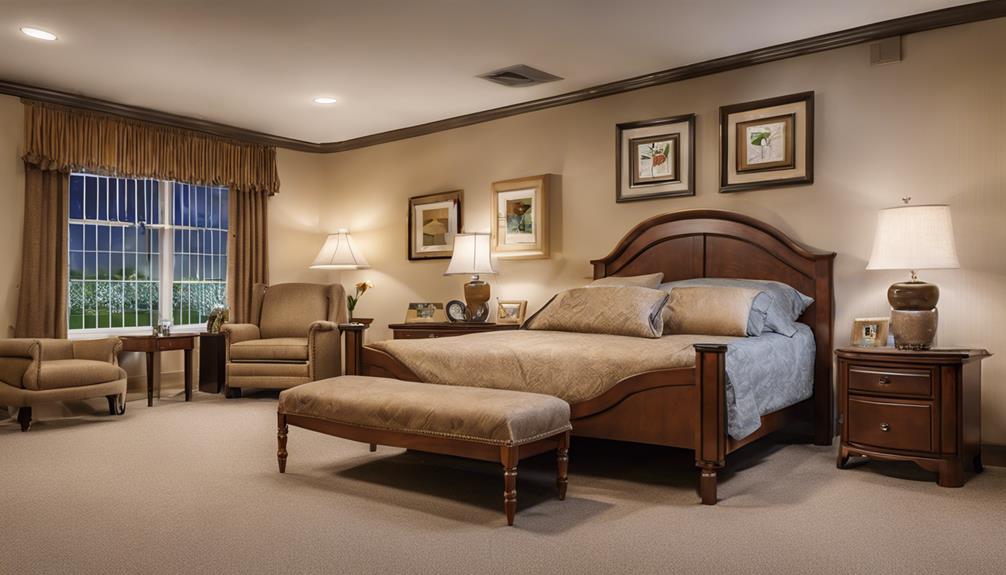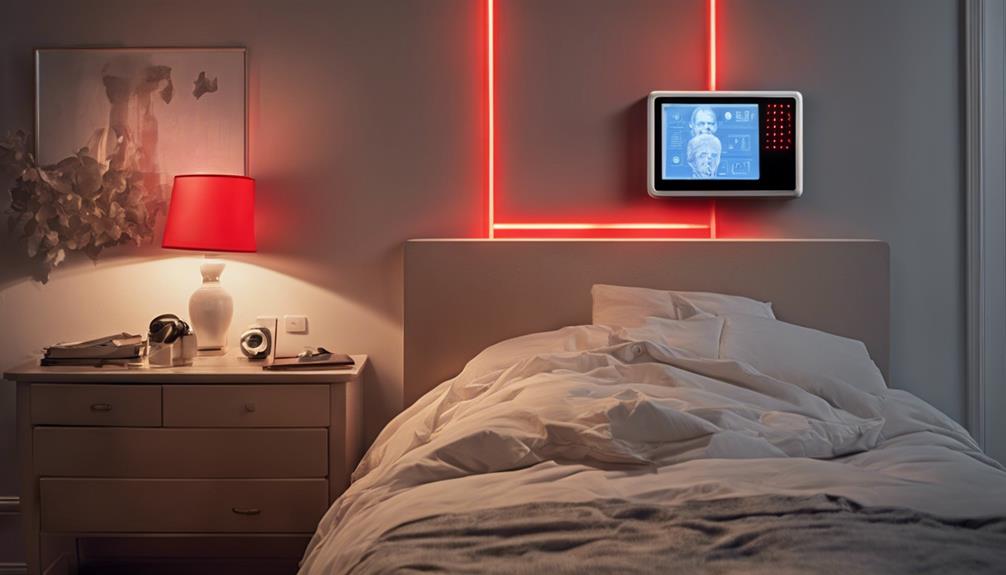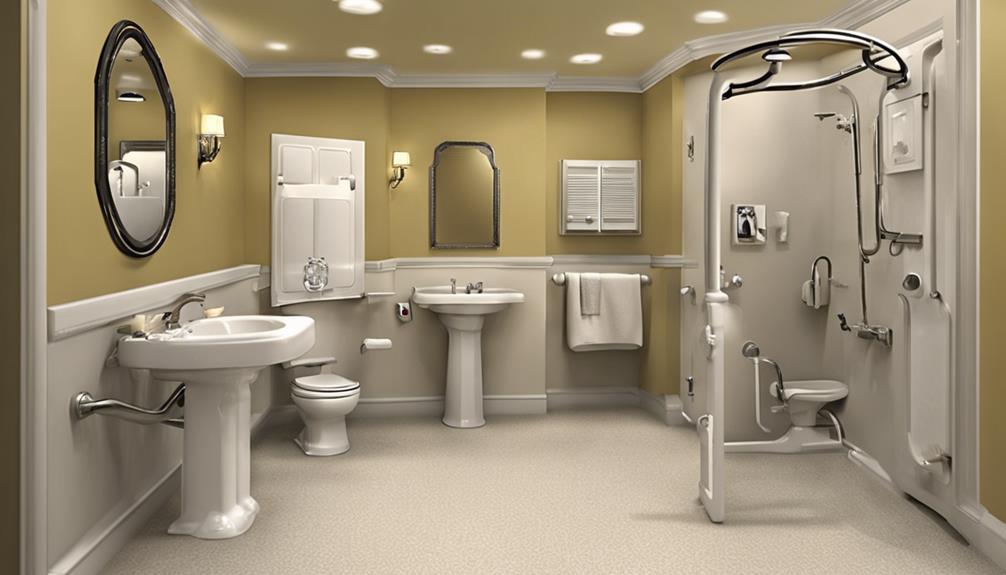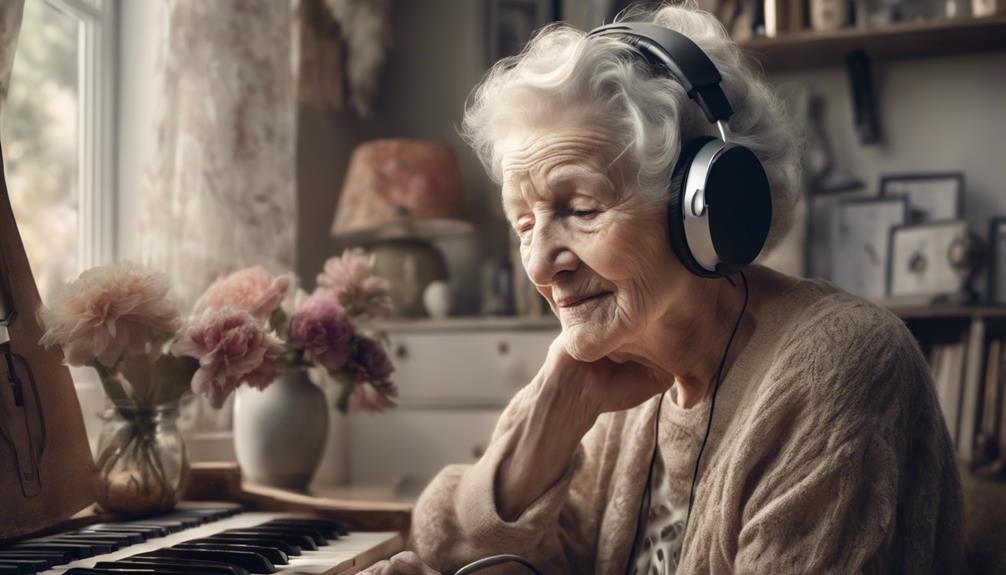For a safe and comfortable assisted living home, focus on essential modifications. Install grab bars in the bathroom, remove fall hazards, and integrate smart home technology. Upgrade kitchen accessibility and enhance lighting for better visibility. Guarantee outdoor accessibility with ramps and handrails. Set up emergency response systems for quick assistance and incorporate mobility assistance equipment like grab bars and stairlifts. These modifications create a secure and accommodating living space for residents. Explore further details to maximize safety and comfort in an assisted living home. Additionally, ensure that pathways are clear of clutter and furniture is arranged to allow easy movement for residents with mobility aids. Regularly inspect and maintain all installed equipment to avoid malfunctions, further contributing to **creating a safe home environment**. By taking these steps, you can significantly reduce the risk of accidents and enhance the overall well-being of the residents.
Key Takeaways
- Install grab bars and handrails for added support and stability.
- Ensure zero-step entryways and ramps with secure railings.
- Implement emergency response systems for 24/7 monitoring and immediate assistance.
- Enhance lighting for visibility and safety, including motion sensor lights.
- Prioritize kitchen accessibility with lowered countertops and lever-handled faucets.
Bathroom Safety Features
We highly recommend adding grab bars in the bathroom to reduce the risk of falls, as statistics show that an older adult is treated for a fall every 11 seconds. These bars provide stability and support, especially when moving in and out of the shower or near the toilet. Additionally, installing a shower bench can enhance safety by offering a secure seating area for bathing. A taller toilet is also beneficial as it reduces strain on the knees and makes sitting down and standing up easier for individuals with mobility issues.
When considering bathroom safety features, prioritizing the well-being of those who may require assistance or have limited mobility is crucial. Ensuring that grab bars are securely installed in strategic locations can greatly decrease the likelihood of accidents. Combining grab bars with a shower bench and a taller toilet creates a safer and more accessible bathroom environment for residents. By implementing these modifications, we can help prevent falls and promote independence in daily activities.
Fall Hazard Removal

To guarantee the safety of residents in assisted living homes, identifying and removing fall hazards is imperative. Fall hazard removal is a critical aspect of seniors' safety in such environments. Common fall hazards include unsecured rugs, unstable furniture, cords, and clutter, all of which can pose significant risks to the well-being of residents. By addressing these hazards, we can create a safer living space for the elderly. The National Institute on Aging offers valuable insights into potential fall hazards that should be addressed in assisted living homes. Implementing fall prevention strategies, such as removing clutter, securing rugs, and stabilizing furniture, is essential for creating a hazard-free environment. Ensuring a safe environment not only prevents falls but also enhances the overall safety and well-being of seniors in assisted living facilities.
| Fall Hazard | Removal Strategies |
|---|---|
| Unsecured rugs | Secure with grips or remove entirely |
| Unstable furniture | Anchor to walls or floor for stability |
| Cords | Tuck away or use cord organizers |
| Clutter | Organize and remove unnecessary items |
| Poor lighting | Increase lighting levels for better visibility |
Smart Home Technology Integration
Smart home technology integration enhances the safety and convenience of assisted living homes through remote control features and specialized systems. These systems offer residents the ability to control various aspects of their environment from a distance, promoting independence and peace of mind.
Updated thermostats linked to smart home technology not only allow for easy temperature adjustments but also provide health benefits by maintaining a comfortable living environment.
In the area of safety, specialized smoke alarms integrated with smart home technology can greatly improve fire safety measures and streamline evacuation procedures in case of emergencies.
Additionally, the integration of medical alert systems with smart home setups ensures quick emergency response and aid for residents in assisted living facilities, enhancing overall security and well-being.
Kitchen Accessibility Upgrades

Enhancing kitchen accessibility for individuals with mobility challenges involves implementing practical upgrades such as lowered countertops, pull-out shelves, and lever-handled faucets. Lowered countertops allow individuals to easily prepare meals while seated in a wheelchair, promoting independence and safety. Pull-out shelves make reaching items in cabinets more manageable, reducing the risk of accidents or overexertion. Lever-handled faucets are effortless to use, requiring minimal hand strength and dexterity.
Here is a table summarizing key kitchen accessibility upgrades:
| Upgrade | Description |
|---|---|
| Lowered Countertops | Enable wheelchair users to comfortably work in the kitchen. |
| Pull-out Shelves | Facilitate easy access to items in cabinets, reducing the risk of accidents. |
| Lever-handled Faucets | Require minimal effort to operate, enhancing usability for individuals. |
| D-shaped Cabinet Handles | Offer a comfortable grip for easy opening and closing of cabinets. |
Lighting and Visibility Enhancements
Improving lighting and visibility in assisted living homes is essential for enhancing safety and accessibility for residents with varying mobility needs. Adequate lighting can greatly reduce the risk of falls by up to 21%, making it a critical aspect of creating a secure environment.
Installing motion sensor lights is a practical way to improve safety, especially for residents with mobility issues, by ensuring they can navigate through spaces without struggling to find light switches. Task lighting in specific areas such as reading nooks or workspaces not only enhances visibility but also contributes to the overall quality of life for residents.
Nightlights strategically placed in hallways and bathrooms play an important role in preventing accidents during nighttime, providing guidance and reducing the chances of tripping or falling. Additionally, optimizing natural light through proper window placement can positively impact residents' mood and well-being, creating a more pleasant living environment that promotes a sense of comfort and safety.
Bedroom Comfort and Safety

When contemplating bedroom adjustments for assisted living, it's vital to concentrate on safety and comfort.
Setting up bed rails can offer additional security and help prevent falls, a prevalent concern among seniors.
Proper lighting is also essential to guarantee visibility and reduce the risk of accidents, especially in the bedroom where most falls occur.
Bed Rails for Safety
Bed rails play an essential role in guaranteeing the safety and stability of seniors in assisted living. They provide necessary support and help prevent falls, especially for individuals with mobility issues. By offering a secure barrier, bed rails enable residents to move in and out of bed safely, promoting independence.
These modifications are critical for reducing the risk of nighttime accidents and injuries. Properly installed bed rails not only enhance comfort but also provide peace of mind for both residents and caregivers. It's important to make sure that bed rails are securely attached and at the appropriate height to effectively assist residents in maintaining their safety and well-being.
Proper Lighting Setup
Enhancing bedroom comfort and safety for seniors involves strategically setting up proper lighting to prevent falls and promote a sense of security. When considering home modifications for aging individuals, lighting plays an essential role in creating a safe environment. Here are some key tips for optimizing the lighting in a senior's bedroom:
| Lighting Tip | Description | Benefits |
|---|---|---|
| Essential Bedroom Lighting | Guarantee sufficient lighting to prevent falls. | Enhances safety and visibility. |
| Bedside Lamps | Position lamps for easy access during the night. | Provides convenient light for nighttime tasks. |
| Motion Sensor Lights | Install sensors to aid navigation in the dark. | Helps seniors move around without searching for switches. |
| Task Lighting | Place lights near reading areas for better visibility. | Reduces eye strain and promotes relaxation before sleep. |
Outdoor Accessibility Solutions

Improving outdoor accessibility for seniors with mobility challenges can be achieved through the installation of ramps with secure railings. Threshold ramps and zero-step entryways make it easier for residents to navigate in and out of the home.
Well-lit pathways enhance safety and visibility during day and night. Adding exterior handrails along these pathways provides extra support and stability for seniors as they move around the property.
Landscaping modifications that demand minimal upkeep can guarantee a more accessible outdoor environment for assisted living residents. Additionally, accessible garden beds allow seniors to participate in gardening activities safely.
Emergency Response Systems

Incorporating an emergency response system into assisted living facilities greatly enhances resident safety and well-being. These systems provide 24/7 monitoring and immediate assistance at the push of a button. By reducing emergency response time by up to 50%, they play an essential role in ensuring residents receive prompt help in case of any emergency.
Studies have shown that emergency response systems can decrease hospital admissions by an average of 33%, highlighting their significance in maintaining the well-being of residents. Additionally, these systems offer peace of mind to both residents and their families, knowing that help is always just a button press away.
With the ability to decrease mortality rates by 15% in assisted living settings, these systems are crucial for ensuring the safety and health of residents. Implementing emergency response systems is a significant step in providing the best care and support for individuals in assisted living facilities.
Mobility Assistance Equipment

In assisted living facilities, seniors benefit from a range of mobility assistance equipment designed to improve their movement and stability. Here are four essential items that can greatly enhance seniors' independence and safety:
- Grab Bars: Installing grab bars in key areas like bathrooms and hallways can provide seniors with additional support when moving around and help prevent accidental falls.
- Handrails: Handrails along staircases and corridors offer seniors a secure grip and added stability, reducing the risk of tripping or losing balance.
- Stairlifts: For seniors facing mobility challenges when moving up and down stairs, stairlifts are a practical solution that enables them to move between different levels of the facility safely and comfortably.
- Ramps: Ramps and threshold ramps create smooth changes for wheelchair users and individuals with mobility difficulties, ensuring easy access to different areas within the assisted living facility.
Properly installed mobility assistance equipment plays a crucial role in enhancing seniors' quality of life by promoting movement and minimizing the risk of accidents.
Frequently Asked Questions
Which of the Following Are Home Modifications Available to Assist Older Adults to Remain in Their Homes?
To assist older adults to remain in their homes, we can consider handrails for support, ramps for mobility, slip-resistant flooring for safety, stairlifts for upper floor access, and bathroom modifications like non-slip decals and handrails.
What Are Some Factors That a Family Should Consider Before Choosing an Assisted Living Facility?
When selecting an assisted living facility, we take into account location for family visits, services like healthcare and social activities, safety measures, staff-to-resident ratio, and reputation. These factors help us guarantee quality care and a supportive environment for our loved one.
What Are Examples of Home Modifications?
We often install grab bars and non-slip flooring for safety. Widening doorways and incorporating ramps improve accessibility. Stairlifts enhance mobility. These modifications create a more inclusive and secure living environment for individuals seeking independence and support.
What Is Home Modification and How Does It Support Aging in Place?
Home modification involves adapting living spaces to meet seniors' changing needs, promoting independence and safety. It empowers older adults to age in place comfortably, enhancing their quality of life. These modifications support autonomy and ease of navigation at home.
Conclusion
To wrap up, making essential adjustments to an assisted living home can significantly enhance safety and accessibility for residents. Just like adding training wheels to a bike helps you ride confidently, these modifications give seniors the support they need to navigate their living space with ease.
From bathroom safety features to emergency response systems, each modification plays a vital role in ensuring a comfortable and secure environment for our loved ones.









